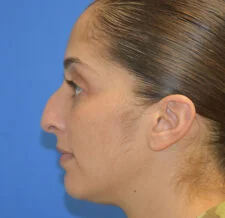If you experience problems with self-confidence stemming from the way your nose looks, you can choose to correct it. In fact, there were more than 352,000 rhinoplasty procedures performed in the U.S. in 2020 according to the American Society of Plastic Surgeons (ASPS). Dr. Neal Goldberg is a highly experienced plastic surgeon who achieves elegant, natural-looking results with rhinoplasty. He can help balance the proportions of your nose with the rest of your surrounding facial features. While surgery may also be performed to correct breathing problems, rhinoplasty is most frequently pursued to correct aesthetic issues in which patients perceive their nose is: too large, small, bumpy, droopy, crooked, wide, narrow, short, or long.
“I take a huge amount of pride in what I do. I really care about my patients and their satisfaction.”
“Dr. Goldberg has EXCEEDED my expectations. I had a wonderful experience with Dr. Goldberg and his staff. I scheduled my operation the same day that I had my very first appointment with him. I am exactly at 1 month post-op, and I already love my rhinoplasty. I can’t express enough, just how happy I am with my results/his work. Dr. Goldberg is so talented, definitely an artist, and I would recommend him to anyone and everyone. HIGHLY HIGHLY RECOMMEND.”












